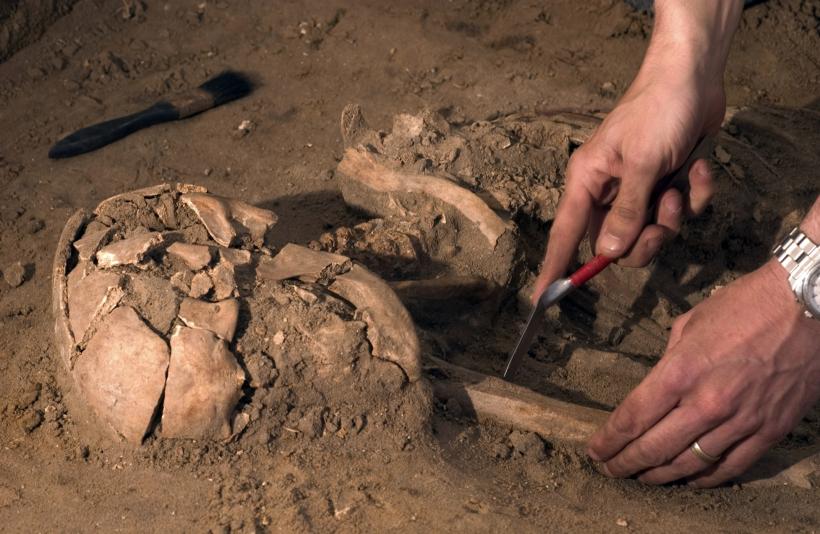
In case you didn't know, Archeologists are in the business of digging out the remains of (often) decimated populations. And business is good. In fact, a team of lucky tragedy seekers just published findings from their recent discovery of writerly remains: an ancient Egyptian author describes an epidemic so awful he was convinced the world was ending. It’s like the Mesopotamian version of Europe’s Black Plague—though this Roman version has received much less attention than her flashy Euro cousin.
Uncovering the Plague
Working on the bank of the ancient city of Thebes (now Luxor), the group of Italian researchers found archaic bodies covered in lime. Why lime you ask? Because historically the substance was used as a disinfectant—meaning the archeologists were onto something horrific! Pottery remains found in three near-by lime-producing kilns dated back to the third century A.D. when a series of epidemics cast another blow on the already ailing Roman Empire.
A final clue solidified the archeologists’ hypothesis that they had stumbled upon the remains of this very plague: a giant bonfire with human remains, implying contagious victims had been incinerated en mass there. The grisly goings-on of this funerary site were not lost to subsequent generations. The lead researcher writes that its “bad reputation . . . doomed it to centuries of oblivion until tomb robbers entered the complex in the early 19th century.” Followed by the voyeuristic archeologists, of course.
Gut Punch to the Roman Empire
These disease episodes—dubbed the “Plague of Cyprian” after a bishop of the era who wrote of its terrors—devastated Egypt and other areas of the Roman Empire and likely contributed to its fall. In fact, the coupling of this plague (with another one a century prior) are estimated to have killed about half of the population of Rome, including two emperors.
Some of the recorded symptoms: bowel “discharge” (we appreciate the lack of detail), violent vomiting, bloody eyes, and in some cases, even loss of limbs. Some have speculated the disease may have been measles or smallpox, but due to desert weather, there is little hope of finding any preserved DNA from the outbreak to test.
But really, it’s probably ok if we never know for sure—as long as whatever-the-hell-it-was did in fact die an arid death in the deserts of the Mediterranean, never to rear its ugly head again.
Image: Thinkstock






